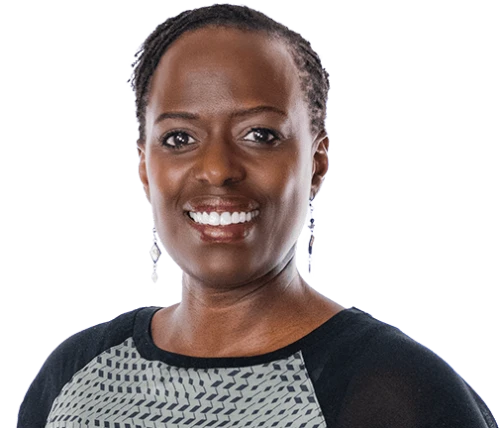Idea In Brief
Inclusive design
When design is not deliberately inclusive, it is unintentionally exclusive. Reasons include our cognitive biases, historic factors, research that requires participants to have a certain level of English, and the use of datasets with entrenched bias.
Five actions
We work with our clients to better understand their users and experiences using methods that integrate thinking on equity, diversity and inclusion. From this work, we have identified five ways designers can be intersectional and inclusive.
Key questions
It can be daunting to try to work out how to identify and start responding to the challenges and opportunities. We have identified the key questions you may be asking now and the ones you could consider in future.
The Xbox series is one of the fastest-selling consoles over the past two decades and is widely considered a great success in the games industry. Its later models have been developed using inclusive design principles, an approach pioneered by August de los Reyes.
He was leading design on the Xbox in 2013 when he became paralysed from the waist down after an accident. Experiencing firsthand how limiting existing design approaches could be for those who are marginalised by mainstream designs, he went on to redesign the Xbox controller with a focus on accessibility and ergonomics that has been valued by all players, and that continues to feature in the Xbox product line.
What lesson can we learn from the Xbox experience? When you centre marginalised groups in your design, everyone benefits.
Unfortunately, there are many more stories that speak to systems that have been designed for and by the mainstream population, in the process sidelining people who are most at risk of marginalisation.
A study in Australia showed that adults with intellectual disability experience potentially avoidable deaths at a higher rate than the rest of the population. While the study did not examine cause of death, it noted the poorer health and access to services experienced by people with intellectual disability. In 2019, researchers found that an algorithm used by US hospitals on more than 200 million people heavily favoured white patients over black patients, resulting in white patients being favoured for a care program over black patients who were sicker and had more chronic conditions.
It is unlikely that the designers of these systems and services set out to discriminate. But when design is not deliberately inclusive, it is unintentionally exclusive. Reasons include our cognitive biases, historic factors, research that requires participants to have a certain level of English, and the use of datasets with entrenched bias.
In this article, we seek to demonstrate the value of engaging those most at risk of marginalisation – especially people with intersectional identities – when designing programs and services, and provide techniques and approaches for doing so.
Inclusive design facilitates innovation, reduces disadvantage and improves outcomes for all
Many sponsors believe they need to balance the pragmatism of designing for the majority and the complexity of designing for those at the edges. This is a false choice.
By engaging a wide range of users from the outset, including people who are typically underserved or marginalised by a system, providers are more likely to surface unusual insights that encourage the design of ground-breaking solutions. It is an investment in solutions and services that are more equitable, innovative, flexible and responsive to change.
We can see thoughtful engagement delivering positive outcomes in the cases of silent airports and age-friendly social infrastructure.
Silent airports were designed to reduce noise pollution for people who find travel stressful and overwhelming. They have resulted in more relaxing travel experiences for mainstream travellers as well; this was once a luxury reserved only for a select few who could access airport lounges. Now, improved visual, interactive and digital wayfinding caters to travellers who are neurodivergent, people who may experience language barriers, and people with less common information processing styles. This improved experience for all was achieved by deliberately considering the needs of and designing for those at the edges.
Meanwhile, Manchester City Council’s Victoria North redevelopment in the United Kingdom seeks to deliver up to 15,000 new homes over the next 20 years, with housing and amenities suitable for older people, working collaboratively with different community groups. A six-month pilot research project by academics from three universities found social infrastructure projects that are committed to age-friendly principles better accommodate a variety of different needs in the communities, are inclusive for people of all ages, facilitate intergenerational connections, and more.
Identifying and engaging underrepresented groups needs to be deliberate
Systems are typically managed and administered by the majority population, who have less insight into the experiences and needs of minority groups. When programs, services and systems are reviewed, the focus tends to be on ‘known’ issues that need addressing.
To uncover ‘unknown’ issues, we need to engage with different audiences who have been previously overlooked, and from the beginning of the research and design process – those at the edges of a system. Unless actively and thoughtfully sought out, these people are easy to miss, and systems continue to be refined to suit the needs of the most engaged groups or the loudest voices.
Even when service providers are intentionally comprehensive in their efforts to engage different groups, they often conceive of underrepresented groups in relation to just one or two characteristics: people who are women, culturally diverse, migrants, LGBTIQA+, people with disability or neurodivergence. They may not recognise intersectionality – a term coined by Kimberlé Crenshaw to recognise the concept of overlapping and interdependent systems of discrimination across different identities – and its impact on the experience of being marginalised by a system.
Identities can be fluid and overlapping. For example, a person’s gender, ethnicity, migration status and age could mean they are a subject to multiple, intersecting forms of disadvantage within a system. A newly arrived migrant woman experiencing financial hardship will be subject to different types of disadvantage when accessing a health service compared to a queer woman living with a disability.
Recognising the importance of inclusivity and intersectionality is a good start, but providers may find that identifying and engaging marginalised groups can be challenging. These groups of people may be less likely to engage due to mistrust in the system, or they may face other barriers to engagement. Mistrust can stem from being discriminated against by existing systems due to historic factors while barriers to access can be social, financial, cultural, linguistic, structural, or any combination of these.
Five ways to be inclusive and intersectional in your research
Identifying and recruiting users at the edges need not be expensive. At Nous, we partner with clients to help them design effective programs and services. We work with our clients to better understand their users and experiences using methods that integrate thinking on equity, diversity and inclusion.
From this work, we have identified five ways designers can be intersectional and inclusive.
Getting started might be easier than you think
It can be daunting to try to work out how to identify and start responding to the challenges and opportunities we have outlined here – however, the risks of not doing so are greater.
We have identified the key questions you may be asking now and the ones you could consider in future to strengthen your approach to program or service design.
Asking these questions can help you to design with inclusivity in mind. Get it right, and the designs that result will offer enduring solutions to your users – all of them.
Get in touch to explore how we can support you to take an intersectional and inclusive approach to service and program design.
Connect with Abby Nduva and Trisha Santhanam on LinkedIn.
Prepared with input from Bhairavi Raman, Sarah Bell and Virginia Wong.


